Quantum Computing: Reference
- Transfer
Do you like cheat sheets? We adore and therefore today publish an article that collects all the most important information about quantum computing. We collected it from five articles on the topic that came out before that. But the most important thing is only a cheat sheet, not a quick-guide for beginners. Beginners are advised to study all the articles as a whole, links are on the list under the cut!

Here you can find information about the main states, gates and matrices, useful mathematical formulas and other information that has already appeared in the publications of this series.
Any unitary transformation of the vector | ψ〉 can be visualized as a simple displacement of a point (marked as | ψ〉) along the Bloch sphere *. Unfortunately, this visual representation is only suitable for single-qubit states: no generalization has yet been invented for multi-qubit systems. The Bloch sphere is sometimes called the unit sphere.
* Pure states correspond to points on the surface of a sphere; mixed states correspond to points inside a sphere. A detailed explanation is given in our publication Fundamentals of Quantum Computing: Pure and Mixed States .
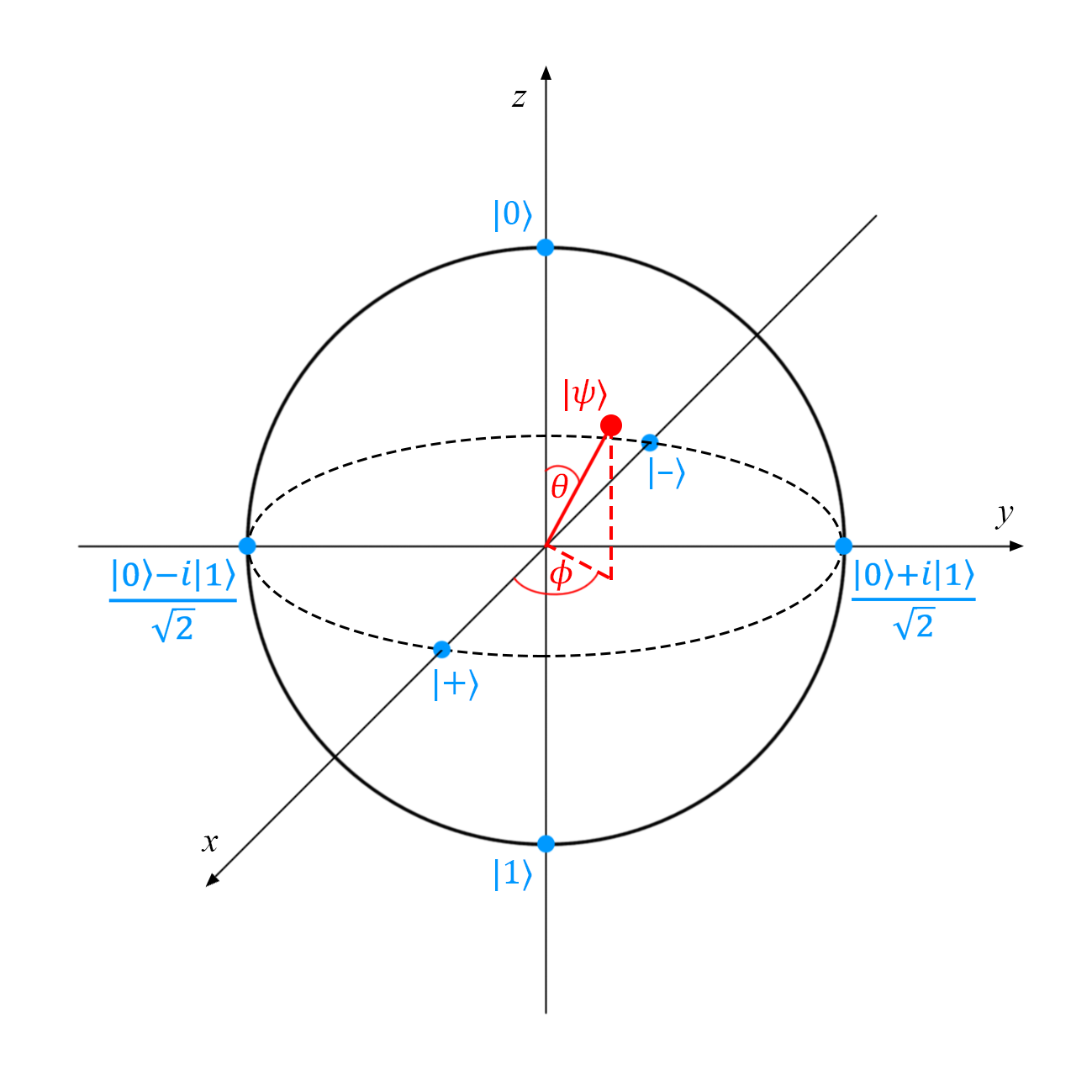
One-qubit states of the

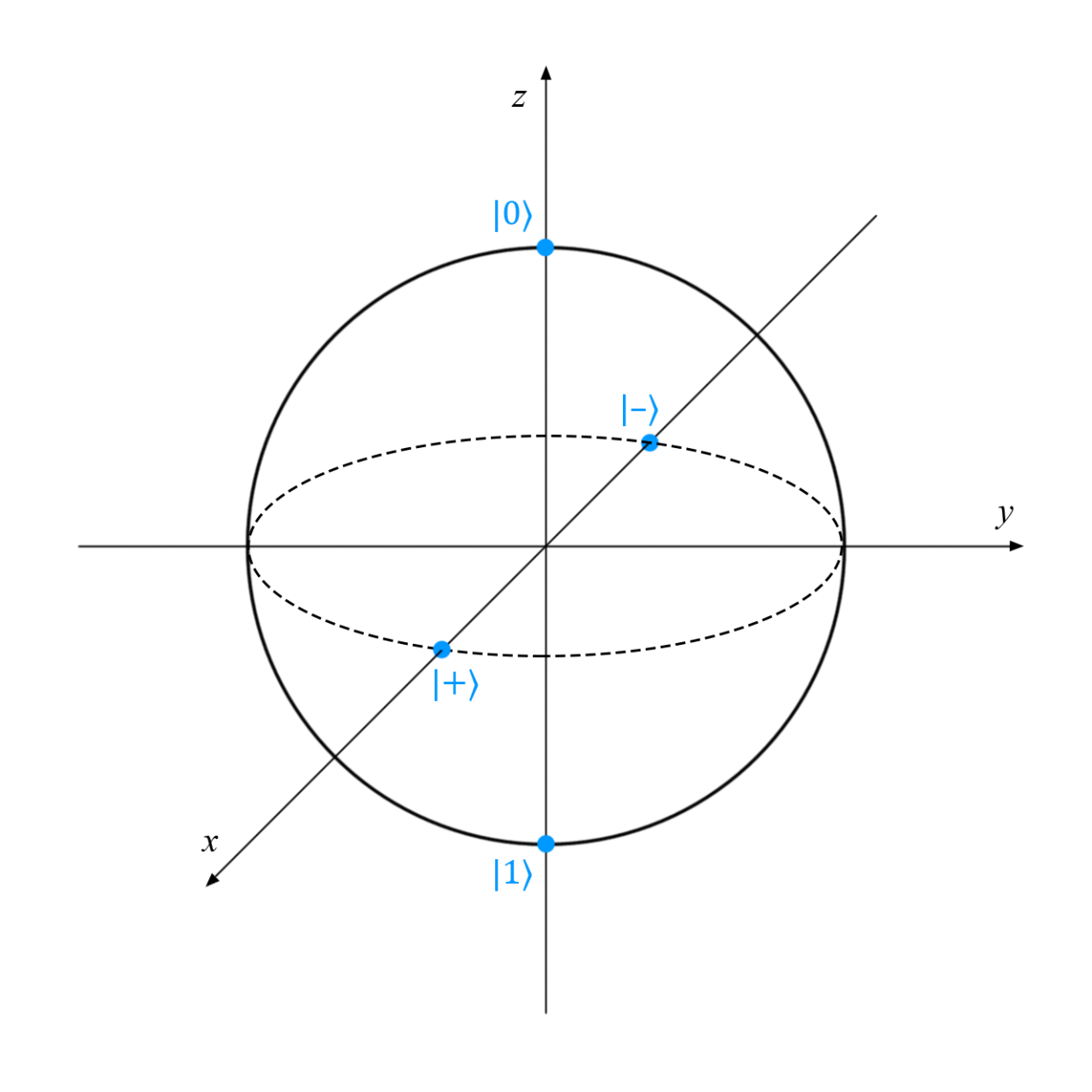
Bell State (EPR pair) are the simplest examples of entangled systems consisting of two qubits:
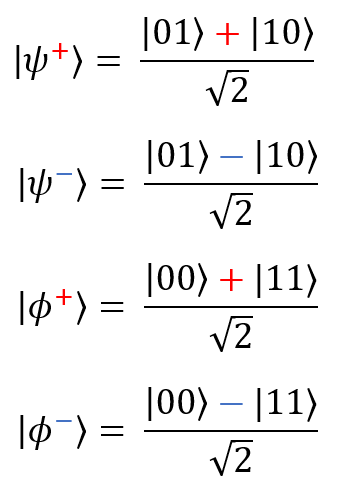
GHC (Greenberger – Horn – Zeilinger) states in the general form (for n qubits) and in the simplest form (for three qubits):
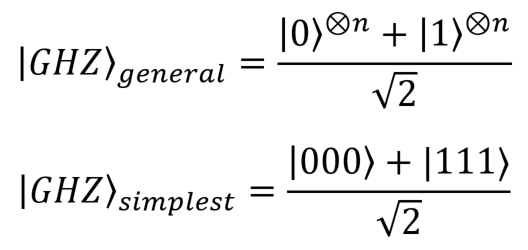
The following is a summary of the most important valves presented in our previous publication on valves and circuits . We added information about the operations for all one- and two-qubit gates (if there are three or more operations, the formulas become too long). In the expressions for controlled gates, the identity matrix (II) is highlighted in red, the matrix of the original gate is highlighted in blue, as in one of the previous publications .
The Pauli matrices are inverse to themselves:

The density operator can be defined as
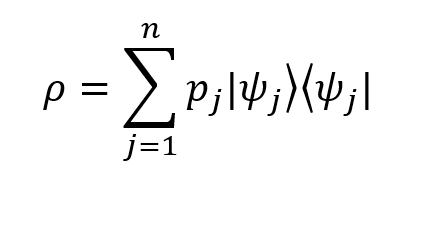
Here:

Articles from the cycle:
Here you can find information about the main states, gates and matrices, useful mathematical formulas and other information that has already appeared in the publications of this series.
Table of contents
- Flea Orb
- Basic quantum states
- Gates, dies and operations
- Useful Relationships and Equations
Flea Orb
Any unitary transformation of the vector | ψ〉 can be visualized as a simple displacement of a point (marked as | ψ〉) along the Bloch sphere *. Unfortunately, this visual representation is only suitable for single-qubit states: no generalization has yet been invented for multi-qubit systems. The Bloch sphere is sometimes called the unit sphere.
* Pure states correspond to points on the surface of a sphere; mixed states correspond to points inside a sphere. A detailed explanation is given in our publication Fundamentals of Quantum Computing: Pure and Mixed States .

Basic quantum states
One-qubit states of the


Bell State (EPR pair) are the simplest examples of entangled systems consisting of two qubits:

GHC (Greenberger – Horn – Zeilinger) states in the general form (for n qubits) and in the simplest form (for three qubits):

Gates, dies and operations
The following is a summary of the most important valves presented in our previous publication on valves and circuits . We added information about the operations for all one- and two-qubit gates (if there are three or more operations, the formulas become too long). In the expressions for controlled gates, the identity matrix (II) is highlighted in red, the matrix of the original gate is highlighted in blue, as in one of the previous publications .
| Names | Matrix representation | Designations | View in Q # | Basic operations |
|---|---|---|---|---|
Pauli Gate X, X, NOT, Bit Switch,  | 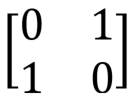 |   | X (qubit: Qubit) | 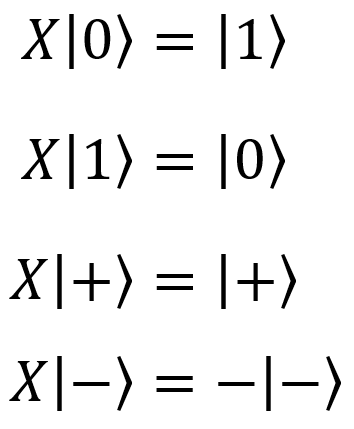 |
Pauli valve Y, Y,  |  |  | Y (qubit: Qubit) | 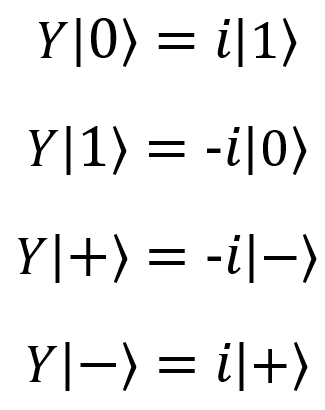 |
Pauli valve Z, Z, phase switching,  |  |  | Z (qubit: Qubit) | 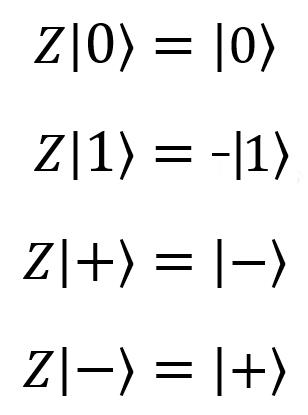 |
| Hadamard Valve, H | 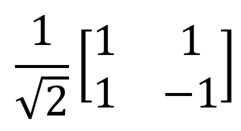 |  | H (qubit: Qubit) | 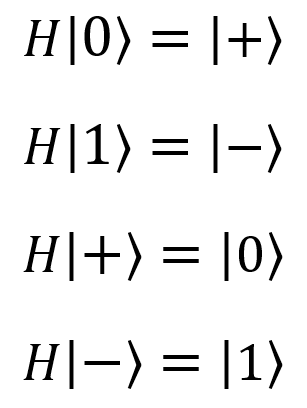 |
Phase shift  |  |  | R1 (theta: Double, qubit: Qubit) More generally, R (pauli: Pauli, theta: Double, qubit: Qubit) | 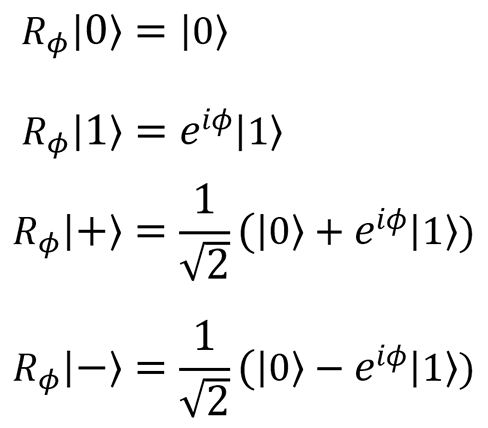 |
Phase shift,,  S S |  |  | S (qubit: Qubit) | 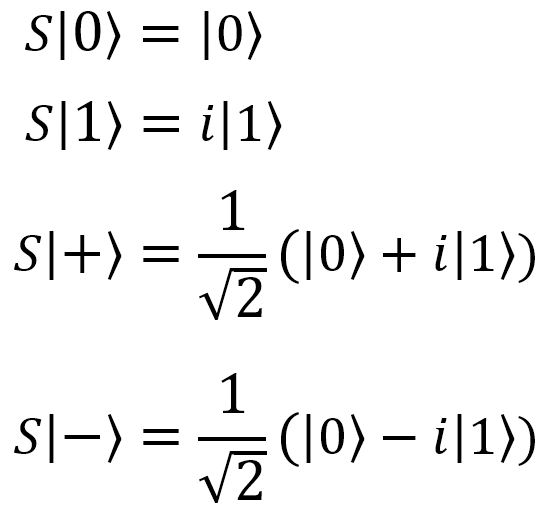 |
 , T , T |  |  | T (qubit: Qubit) | 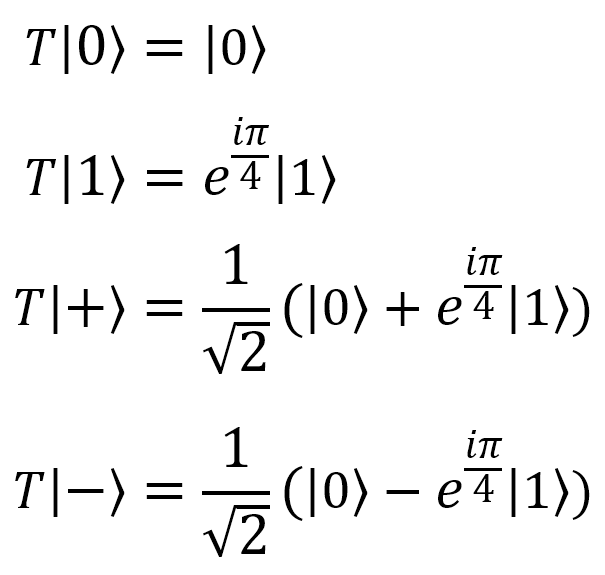 |
| Swap |  |  | SWAP (qubit1: Qubit, qubit2: Qubit) | 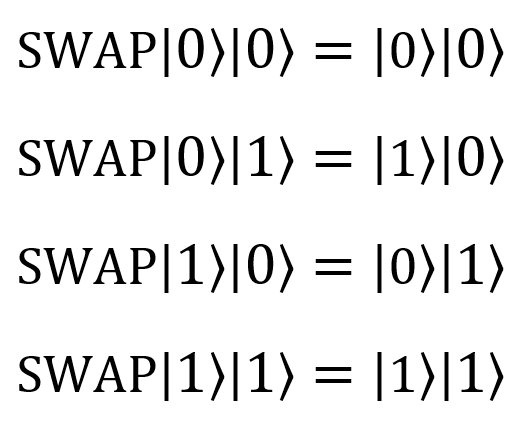 |
| CNOT |  |  | CNOT (control: Qubit, target: Qubit) or (Controlled X) ([control], (target)); | 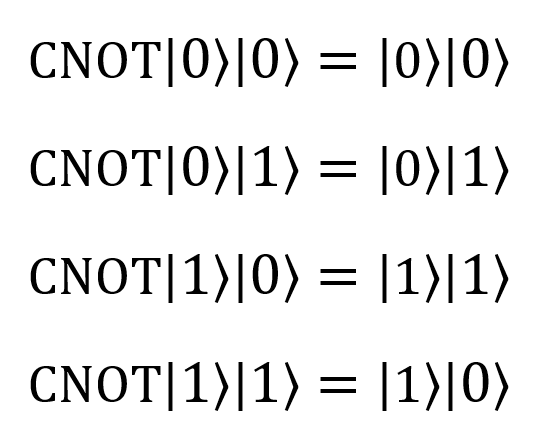 |
| CCNOT, Toffoli valve | 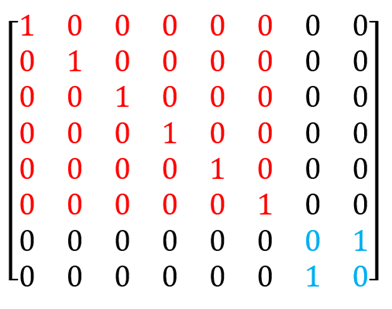 |  | CCNOT (control1: Qubit, control2: Qubit, target: Qubit) or (Controlled X) ([control1; control2], target); | - |
| CSWAP, Fredkin valve | 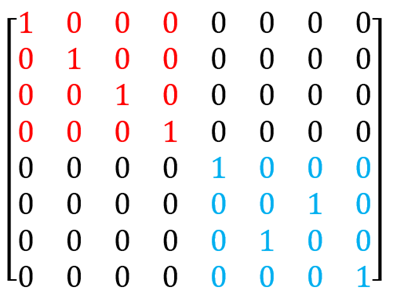 |  | (Controlled SWAP) ([control], (target)); | - |
Useful Relationships and Equations
Matrices Pauli
The Pauli matrices are inverse to themselves:

Density operator
The density operator can be defined as

Here:
 - the probability that the system is in a state at the initial moment of time
- the probability that the system is in a state at the initial moment of time  .
.- The element
 corresponds to the result of the external product of the vector
corresponds to the result of the external product of the vector  by itself (such a transformation is also called the projection operator).
by itself (such a transformation is also called the projection operator). - n is the total number of possible states of the system (in our example there are 3 of them).
 as expected (the sum of the probabilities of all possible states is 1).
as expected (the sum of the probabilities of all possible states is 1).
Resources
- More information is available on the Microsoft Quantum website.
- Download Quantum Development Kit
- Sign up for the Microsoft Quantum Newsletter
- Get the latest from Microsoft Quantum Blog
